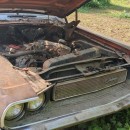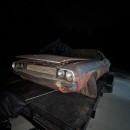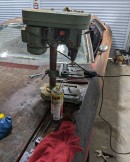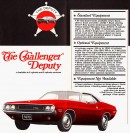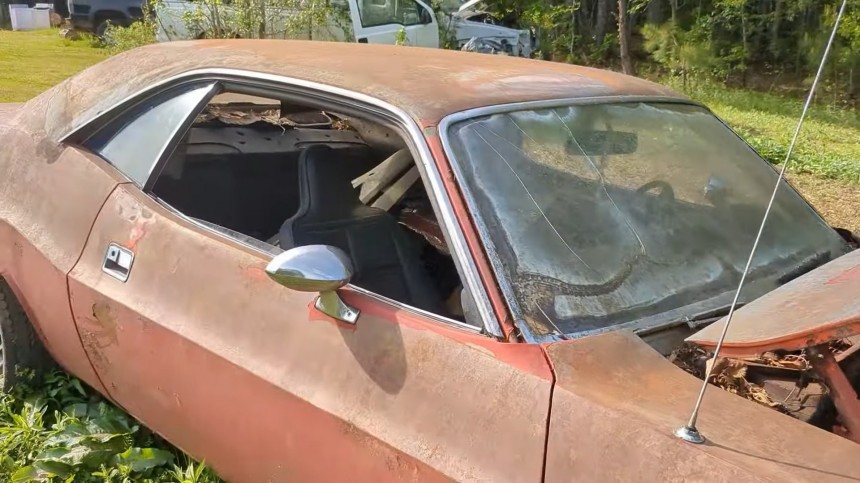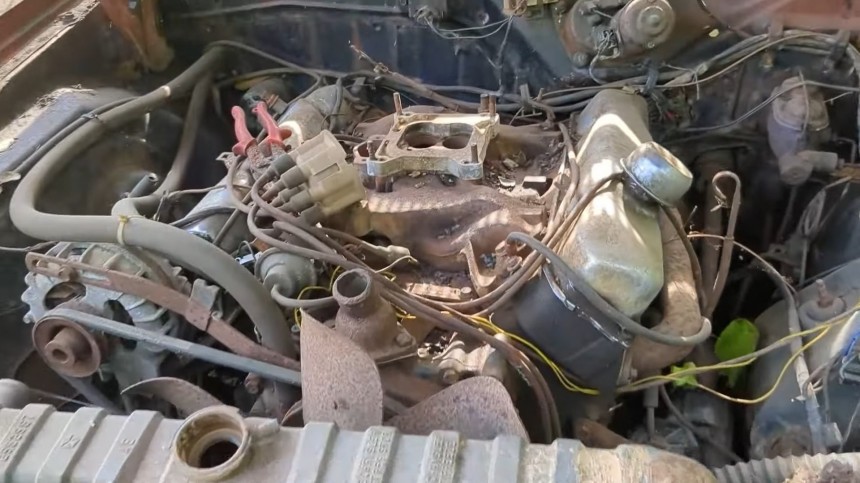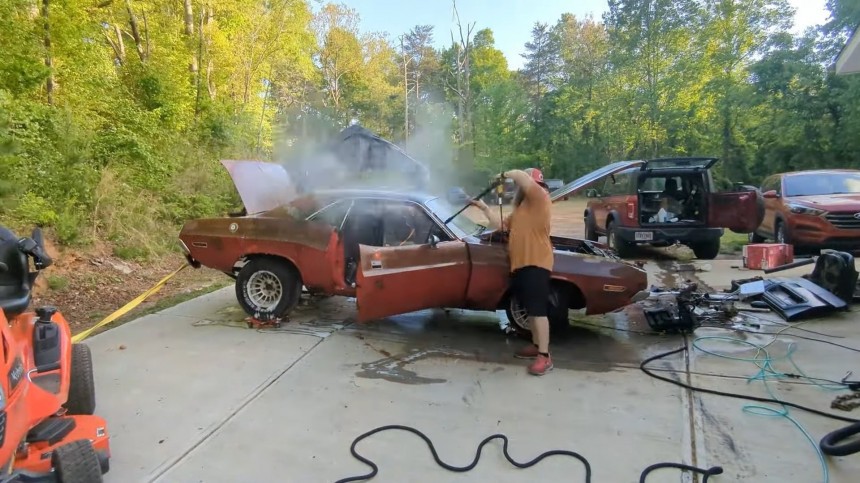When the Challenger hit showroom floors in the fall of 1969 as an all-new 1970 model, Chrysler expected to send 200,000 Dodge ponies to new homes. Mother Mopar offered its newborn broad access to its equipment, trim, and power wardrobes, from the top-of-the-line R/T SE with a 426 Hemi to the lowly coupes to ensure that all pockets could afford the debuting E-body automobile.
Before you shout from the top of your combustion chambers, ‘Infamy! A Dodge Challenger Coupe?’ please allow me to expand. The lowest-key first-year Challenger was introduced in March 1970, in the middle of the model year, and it was a pillarless coupe, so to speak. Deputy was the trim name, and its rear windows were bolted shut, while the crank holes in the panels were simply covered with a chrome plug.
It came with four wheels (five, if you add the spare; alright, six – the steering one also counts, right), two doors, two seats (borrowed from its twin E-body cousin Barracuda) in black or black-and-white, and very little standard equipment. The sales brochure listed the following: single horn, armrests, ashtrays, carpet, trunk mat, hubcaps, padded sun visors, concealed two-speed windshield wipers, and three-speed manual floor shift transmission.
The base engine was a 198–cubic–inch—the legendary 3.3-liter ‘one-tire fire’ slant six-cylinder motor. V8? Got it! A 318 filled in the blanks for the eight-cylinder worshipers who didn’t want to pay an extra $125 for the base Challenger ($2,850).
By March, Chrysler execs had probably figured out that the 200k-unit high-water mark wasn’t realistic, and the Deputy was called in for duty. $2,725 was only a 5% cut, and it didn’t lure shoals of avid prospects, ready to turn their wallets, piggy banks, and small change jars inside-out for a Challenger.
Surprisingly, the Deputy didn’t catch on, with a mere 4,344 assembled for the 1970 production. Apart from the two base engines, the Deputy could be had with the bigger Six, the 225-cubic-inch (3.7 liters), or the renowned 383 big-block. The 6.3-liter V8 came with a two-barrel of a more respectable four-barrel carb. However, putting a big motor in a cheapo Challenger defeated the purpose of low-budget aims.
Hence, only 22 Deputies came with the 383 V8 (sixteen 2-bbl and six 4v – the latter split smack-dab in the middle: three three-speed TorqueFlite automatics, three four-speed manuals). The bulk of production fell on the shoulders of the 198-powered version (1,864), while the 225 and the 318 were ordered in nearly equal numbers (1,215 for the six-cylinder, 1,243 on the small-block V8 side).
Rumors vehiculate the idea of two 340 V8s with four-barrel carbs that found their way into a pair of Deputies. The tight-priced Challenger was not, in fact, ‘a more attractive buy than ever before,’ despite what the Dodge literature claimed (see the gallery).
That’s why these first-year rarities aren’t easy to come across today. Many have perished long ago, others have morphed into something more muscular, while some donated their valuables to other projects. And, of course, there are the ‘finds’ (barn, scrapyard, garage, you name it). Well, here’s one of those long-abandoned examples that lived (if the word is applicable) many of its past years in West Georgia.
The YouTuber who pulled this Deputy out of its misery paid ‘under $5,000’ for it – including those debatable turbine wheels – and I’m not sure it was worth the effort. Between 1970 and 2024, the 198-cube Slant Six was replaced by a 383 with a four-barrel.
As far as the transmission goes, the three pedals are still inside the car so that it could be one of two possibilities. Either the swap involved a four-speed upgrade, or the punchy 383 found itself in the questionable company of the three-speed.
I vote for the former – why would anyone go through the trouble of putting a big-block V8 and traction bars and leave the granny tranny in? It's obvious by now that this Deputy became a hotrod at one point. It’s also striking that it’s not in the best of conditions. Look at how the YouTuber from Crusty_Trucks pulls the bucket seats straight off the floor. Not that there’s much left of that – rust has had its ways with this Mopar.
The big surprise, however, is that this miscreant got optioned with racing mirrors, a radio, roof-drip rail moldings, and black accent stripes over the Plum Crazy livery. That's a pretty crazy choice of chromatics (pun unavoidable). The vlogger didn’t post the fender tag anywhere, so we’ll take his word on the factory-installed options.
The good news is that the 383 under the hood turns by hand; the caveat is that the YouTuber will dump it and put a correct 198 inside but keep the alleged four-speed manual. If, by any chance, the car still has the three-speed, that gearbox will also get decommissioned. To what extent the repair job will go is still unclear, but restoration is beyond the owner’s current plans.
Nonetheless, the car begs the question: Is it worth a total renovation, given its rarity? Out of the 77,000 Challengers assembled for 1970, this beater belongs to less than 2.5% of production. What would you do with/to it—if anything—and for how much money?
It came with four wheels (five, if you add the spare; alright, six – the steering one also counts, right), two doors, two seats (borrowed from its twin E-body cousin Barracuda) in black or black-and-white, and very little standard equipment. The sales brochure listed the following: single horn, armrests, ashtrays, carpet, trunk mat, hubcaps, padded sun visors, concealed two-speed windshield wipers, and three-speed manual floor shift transmission.
The base engine was a 198–cubic–inch—the legendary 3.3-liter ‘one-tire fire’ slant six-cylinder motor. V8? Got it! A 318 filled in the blanks for the eight-cylinder worshipers who didn’t want to pay an extra $125 for the base Challenger ($2,850).
Surprisingly, the Deputy didn’t catch on, with a mere 4,344 assembled for the 1970 production. Apart from the two base engines, the Deputy could be had with the bigger Six, the 225-cubic-inch (3.7 liters), or the renowned 383 big-block. The 6.3-liter V8 came with a two-barrel of a more respectable four-barrel carb. However, putting a big motor in a cheapo Challenger defeated the purpose of low-budget aims.
Hence, only 22 Deputies came with the 383 V8 (sixteen 2-bbl and six 4v – the latter split smack-dab in the middle: three three-speed TorqueFlite automatics, three four-speed manuals). The bulk of production fell on the shoulders of the 198-powered version (1,864), while the 225 and the 318 were ordered in nearly equal numbers (1,215 for the six-cylinder, 1,243 on the small-block V8 side).
That’s why these first-year rarities aren’t easy to come across today. Many have perished long ago, others have morphed into something more muscular, while some donated their valuables to other projects. And, of course, there are the ‘finds’ (barn, scrapyard, garage, you name it). Well, here’s one of those long-abandoned examples that lived (if the word is applicable) many of its past years in West Georgia.
The YouTuber who pulled this Deputy out of its misery paid ‘under $5,000’ for it – including those debatable turbine wheels – and I’m not sure it was worth the effort. Between 1970 and 2024, the 198-cube Slant Six was replaced by a 383 with a four-barrel.
I vote for the former – why would anyone go through the trouble of putting a big-block V8 and traction bars and leave the granny tranny in? It's obvious by now that this Deputy became a hotrod at one point. It’s also striking that it’s not in the best of conditions. Look at how the YouTuber from Crusty_Trucks pulls the bucket seats straight off the floor. Not that there’s much left of that – rust has had its ways with this Mopar.
The big surprise, however, is that this miscreant got optioned with racing mirrors, a radio, roof-drip rail moldings, and black accent stripes over the Plum Crazy livery. That's a pretty crazy choice of chromatics (pun unavoidable). The vlogger didn’t post the fender tag anywhere, so we’ll take his word on the factory-installed options.
Nonetheless, the car begs the question: Is it worth a total renovation, given its rarity? Out of the 77,000 Challengers assembled for 1970, this beater belongs to less than 2.5% of production. What would you do with/to it—if anything—and for how much money?

